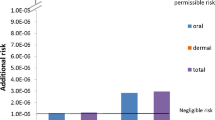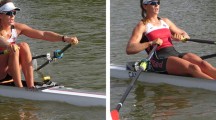Abstract
Most synthetic turf fields have crumb rubber interspersed among the simulated grass fibers to reduce athletic injuries by allowing users to turn and slide more readily as they play sports or exercise on the fields. Recently, the crumbs have been implicated in causing cancer in adolescents and young adults who use the fields, particularly lymphoma and primarily in soccer goalkeepers. This concern has led to the initiation of large-scale studies by local and federal governments that are expected to take years to complete. Meanwhile, should the existing synthetic turf fields with crumb rubber be avoided? What should parents, players, coaches, school administrators, and playground developers do? What should sports medicine specialists and other health professionals recommend? Use grass fields when weather and field conditions permit? Exercise indoors? Three basic premises regarding the nature of the reported cancers, the latency of exposure to environmental causes of cancer to the development of clinically detectable cancer, and the rarity of environmental causation of cancer in children, adolescents, and young adults suggest otherwise.

Source: US National Cancer Institute Surveillance, Epidemiology, and End Results Program, SEER 18 Regions, 2000–2013 [29]
Similar content being viewed by others
References
How safe is the artificial turf on your child’s sports field? 2016. http://www.nbcnews.com/watch/nightly-news/how-safe-is-the-artificial-turf-on-your-childs-sports-field-339230787933. Accessed 12 Jun 2016.
US to mount multiagency study of health risks of synthetic turf. 2016. http://www.sfgate.com/nation/article/US-to-mount-multiagency-study-of-health-risks-of-6827632.php. Accessed 2 Jul 2016.
Federal research on recycled tire crumbs used on playing fields. 2016 https://www.epa.gov/chemical-research/federal-research-recycled-tire-crumbs-used-playing-fields. Accessed 16 Jun 2016.
Request to National Toxicology Program to conduct toxicological studies on health impacts of chemicals released from synthetic turf. 2016 http://www.oehha.ca.gov/risk/SyntheticTurfStudies/TurfRequest040416.html. Accessed 16 Jun 2016.
Synthetic turf/recycled tire crumb rubber research program. 2016. http://ntp.niehs.nih.gov/ntp/about_ntp/bsc/2016/june/meeting%20materials/turf_crumb-rubber_508.pdf. Accessed 16 Jun 2016.
SB 47 Senate Bill. Bill analysis: California. 2016 http://www.leginfo.ca.gov/pub/15-16/bill/sen/sb_0001-0050/sb_47_cfa_20150413_101423_sen_comm.html. Accessed 13 Jun 2016.
Dorsey M, Anderson A, Ardo O, et al. Mutagenic potential of artificial athletic field crumb rubber at increased temperatures. Ohio J Sci. 2015;115(2):32–9.
Schilirò T, Traversi D, Degan R, et al. Artificial turf football fields environmental and mutagenicity assessment. Arch Environ Contam Toxicol. 2013;64(1):1–11.
Ginsberg G, Toal B, Kurland T. Benzothiazole toxicity assessment in support of synthetic turf field human health risk assessment. J Toxicol Environ Health. 2011;74(17):1175–83.
He G, Zhao B, Denison MS. Identification of benzothiazole derivatives and polycyclic aromatic hydrocarbons as aryl hydrocarbon receptor agonists present in tire extracts. Environ Toxicol Chem. 2011;30(8):1915–25.
Gomes J, Mota H, Bordado J, et al. Toxicological assessment of coated versus uncoated rubber granulates obtained from used tires for use in sports facilities. J Air Waste Manag Assoc. 2010;60(6):741–6.
Mota H, Gomes JFP, Bordado JCM, et al. Coated rubber granulates obtained from used tyres for use in sport facilities: a toxicological assessment. C Tecn Mat. 2009;21(3–4):26–30.
Birkholz DA, Belton KL, Guidotti TL. Toxicological evaluation of hazard assessment of tire crumb for use on public playgrounds. J Air Waste Manag Assoc. 2003;53:903–7.
California Office of Environmental Health Hazard Assessment. Evaluation of health effects of recycled waste tires in playground and track products. Prepared for the California Integrated Waste Management Board. 2007. http://www.calrecycle.ca.gov/publications/Detail.aspx?PublicationID=1206. Accessed 5 Apr 2017.
Pavilonis BT, Weisel CP, Buckley B, et al. Bioaccessibility and risk of exposure to metals and SVOCs in artificial turf field fill materials and fibers. Risk Anal. 2014;34:44–55.
Ruffino B, Fiore S, Zanetti MC. Environmental sanitary risk analysis procedure applied to artificial turf sports fields. Environ Sci Pollut Res. 2013;20:4980–92.
Cardno ChemRisk. Review of the human health and ecological safety of exposure to recycled tire rubber found at playgrounds and synthetic turf fields. Prepared for the Rubber Manufacturers Association, Washington, DC. 2013. https://rma.org/publications/scrap-tire-publications/environmental-issues/te-003-review-human-health-and-ecological. Accessed 30 Apr 2017.
Kim H-H, Lim Y-W, Kim S-D, et al. Health risk assessment for artificial turf playgrounds in school athletic facilities: multi-route exposure estimation for use patterns. Asian J Atmos Environ. 2012;6(3):206–21.
Ginsberg G, Toal B, Simcox N, et al. Human health risk assessment of synthetic turf fields based upon investigation of five fields in Connecticut. J Toxicol Environ Health A. 2011;74(17):1150–74.
New York Department of Environmental Conservation. An assessment of chemical leaching, releases to air and temperature at crumb-rubber infilled synthetic turf fields. 2009. http://www.dec.ny.gov/docs/materials_minerals_pdf/crumbrubfr.pdf. Accessed 5 Apr 2017.
Johns DM. Initial evaluation of potential human health risks associated with playing on synthetic turf fields on Bainbridge Island. Seattle (WA): Windward Environ LLC; 2008.
Menichini E, Abate V, Attias L, et al. Artificial-turf playing fields: contents of metals, PAHs, PCBs, PCDDs and PCDFs, inhalation exposure to PAHs and related preliminary risk assessment. Sci Total Environ. 2011;409(23):4950–7.
New York City Department of Parks and Recreation. Crumb rubber synthetic turf athletic fields and play areas lead test results for crumb rubber infill. 2008. https://www.nycgovparks.org/news/reports/synthetic-turf-tests. Accessed 5 Apr 2017.
Marsili L, Coppola D, Bianchi N, et al. Release of polycyclic aromatic hydrocarbons and heavy metals from rubber crumb in synthetic turf fields: preliminary hazard assessment for athletes. J Environ Anal Toxicol. 2015;5:265. doi:10.4172/2161-0525.1000265.
Alicandro G, Rota M, Boffetta P, et al. Occupational exposure to polycyclic aromatic hydrocarbons and lymphatic and hematopoietic neoplasms: a systematic review and meta-analysis of cohort studies. Arch Toxicol. 2016;90(11):2643–56.
Cheng H, Hu Y, Reinhard M. Environmental and health impacts of artificial turf: a review. Environ Sci Technol. 2014;48:2114–29.
Synthetic turf and crumb rubber: investigation of reported cancer among soccer players in Washingon State. 2017. http://www.doh.wa.gov/CommunityandEnvironment/Schools/EnvironmentalHealth/syntheticTurf. Accessed 6 Apr 2017.
Oomen AG, de Groot GM. Evaluation of health risks of playing sports on synthetic turf pitches with rubber granulate: Dutch National Institute for Public Health and the Environment. 2017. http://www.rivm.nl/en/Documents_and_publications/Scientific/Reports/2017/February/Evaluation_of_health_risks_of_playing_sports_on_synthetic_turf_pitches_with_rubber_granulate. Accessed 30 Apr 2017.
Surveillance, Epidemiology, and End Results (SEER) Program. SEER*Stat Database: incidence - SEER 18 Regs research data plus Hurricane Katrina impacted louisiana cases, total U.S., 1969–2013 counties, National Cancer Institute, DCCPS, Surveillance Research Program, Surveillance Systems Branch, released April 2015, based on the November 2014 submission. http://www.seer.cancer.gov. Accessed 30 Apr 2017.
Bleyer A, Keegan T. Incidence of malignant lymphoma in adolescents and young adults in the 58 counties of California with varying synthetic turf field densities. 2016. http://comedsoc.org/index.php?m=47&s=486. Accessed 3 Jul 2016.
Moskowitz CS, Chou JF, Wolden SL, et al. Breast cancer after chest radiation therapy for childhood cancer. J Clin Oncol. 2014;32:2217–23.
Buckley JD, Buckley CM, Breslow NE, et al. Concordance for childhood cancer in twins. Med Pediatr Oncol. 1996;26:223–9.
Bleyer A, Viny A, Barr R. Cancer in 15- to 29-year-olds by primary site. Oncologist. 2006;11(6):590–601.
Howard J. Soccer players’ cancers ignite debate over turf safety. CNN. 2017. http://www.cnn.com/2017/01/27/health/artificial-turf-cancer-study-profile/. Accessed 6 Apr 2017.
Cancer Research UK. People fear cancer more than other serious illness. 2011. http://www.cancerresearchuk.org/about-us/cancer-news/press-release/2011-08-15-people-fear-cancer-more-than-other-serious-illness. Accessed 6 Apr 2017.
Gawande A. The mistrust of science. The New Yorker. 2016. http://www.newyorker.com/news/news-desk/the-mistrust-of-science. Accessed 26 Jun 2016.
Otto SL. Antiscience beliefs jeopardize U.S. democracy. Sci American. 2012.
Science scorned. Nature. 2010,467:133.
What America thinks: MetLife Foundation Alzheimer’s Survey. 2016. https://www.google.com/url?sa=t&rct=j&q=&esrc=s&source=web&cd=1&ved=0ahUKEwjo4b3s7I3PAhUJzWMKHVLdBT4QFggeMAA&url=https%3A%2F%2Fwww.metlife.com%2Fassets%2Fcao%2Ffoundation%2Falzheimers-2011.pdf&usg=AFQjCNHcrtEdJ4s5NDjXYS2X1sRCaojalQ&sig2=TeNN-XSfPHgr9WLlodOvow&cad=rja. Accessed 2 Jul 2016.
Boeke CE, Eliassen AH, Oh H, et al. Adolescent physical activity in relation to breast cancer risk. Breast Cancer Res Treat. 2014;145(3):715–24.
Booth FW, Roberts CK, Laye MJ. Lack of exercise is a major cause of chronic diseases. Compr Physiol. 2012;2(2):1143–211.
Author information
Authors and Affiliations
Corresponding author
Ethics declarations
Funding
No sources of funding were used to assist in the preparation of this article.
Conflict of interest
Archie Bleyer has no conflicts of interest directly relevant to the content of this article.
Rights and permissions
About this article
Cite this article
Bleyer, A. Synthetic Turf Fields, Crumb Rubber, and Alleged Cancer Risk. Sports Med 47, 2437–2441 (2017). https://doi.org/10.1007/s40279-017-0735-x
Published:
Issue Date:
DOI: https://doi.org/10.1007/s40279-017-0735-x





